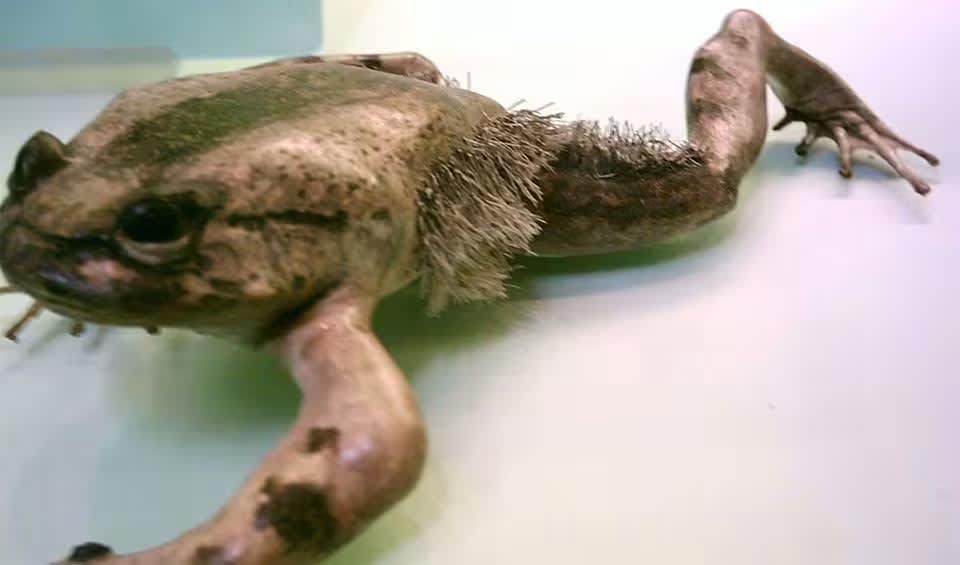A truly unique amphibian species that defies conventional expectations. Found in Central and West Africa, these frogs possess extraordinary adaptations that set them apart from their frog counterparts. Its body is covered in tiny, hair-like projections, giving it a furry appearance. These projections are actually modified scales and are more prominent in males than in females. The frog’s skin color can vary from brown to gray, with darker spots or stripes.
Hairy frogs are found in humid forest environments, where they inhabit leaf litter and vegetation near streams and rivers. They are nocturnal and spend most of their time hidden under leaves or rocks during the day. They are skilled climbers and can often be found perched on branches or leaves.
One of the most remarkable features of the Hairy frog is its ability to break its own bones to reveal sharp claws in its toes, which it employs as a last resort defense mechanism. This extraordinary behavior has earned the frog its alternate name, the Wolverine frog, drawing parallels to the fictional Marvel Comics character known for similar self-regenerating abilities.
In addition to their formidable claws, male hairy frogs exhibit another intriguing adaptation during the breeding season. They produce long hair-like strands of skin and arteries, which serve multiple functions. These “hairs” aid in oxygen absorption through the skin, allowing the male frogs to respire more efficiently while caring for their brood. This unique reproductive strategy highlights the incredible diversity of adaptations observed in amphibian species.
Distribution
 Angola
Angola Cameroon
Cameroon Congo-Brazzaville
Congo-Brazzaville DR Congo (Kinshasa)
DR Congo (Kinshasa) Equatorial Guinea
Equatorial Guinea Gabon
Gabon Nigeria
NigeriaAnything we've missed?
Help us improve this page by suggesting edits. Glory never dies!
Suggest an editGet to know me
Terrestrial / Aquatic
Altricial / Precocial
Polygamous / Monogamous
Dimorphic (size) / Monomorphic
Active: Diurnal / Nocturnal
Social behavior: Solitary / Pack / Herd
Diet: Carnivore / Herbivore / Omnivore / Piscivorous / Insectivore
Migratory: Yes / No
Domesticated: Yes / No
Dangerous: Yes / No




